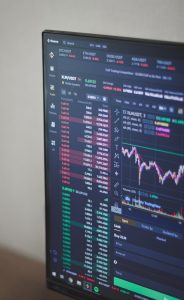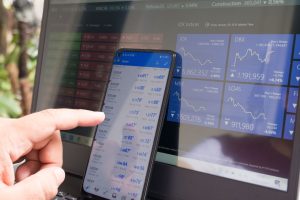Forex, or foreign exchange trading, is the process of buying and selling currencies from around the world. It is a decentralized market, meaning that it operates 24 hours a day, five days a week, and is not controlled by any central authority or government. Forex trading is a popular investment opportunity for individuals and institutions alike, and it offers the potential for significant profits for those who understand how it works.
Forex trading is essentially the exchange of one currency for another. For example, if you are a US-based investor and you want to buy euros, you would exchange your US dollars for euros. The exchange rate between the two currencies is determined by a number of factors, including economic and political conditions in each country, interest rates, and other market forces.
There are a number of different ways that individuals and institutions can participate in forex trading. The most common method is through a forex broker, who serves as an intermediary between the trader and the market. The broker provides a trading platform, which allows the trader to buy and sell currencies, as well as access to real-time market data and analysis tools.
The forex market is divided into several different tiers, each of which caters to a different type of trader. The largest tier is the interbank market, which is where the largest banks and financial institutions trade currencies with each other. The next tier is the retail market, which is where individual traders and small businesses buy and sell currencies. The retail market is further divided into two sub-markets: the spot market and the futures market.
The spot market is where currencies are traded for immediate delivery, while the futures market is where currencies are traded for delivery at a later date. The spot market is the most popular among individual traders, as it offers the greatest flexibility and the lowest transaction costs. However, the futures market can be useful for hedging against currency risk, as it allows traders to lock in a specific exchange rate for a future transaction.
One of the key features of the forex market is its high liquidity, which means that it is easy to buy and sell currencies quickly and at a fair price. This is because the forex market is the largest financial market in the world, with an average daily trading volume of over $5 trillion. This high liquidity also means that traders can use leverage to amplify their potential profits, as well as their potential losses.
Leverage is a key concept in forex trading, and it refers to the amount of capital that a trader can borrow from their broker to open a position. For example, if a trader has a leverage ratio of 100:1, they can trade up to $100 for every $1 of their own capital. This means that a small amount of capital can be used to control a much larger position, which can lead to significant profits if the trade goes in the trader’s favor. However, leverage also increases the risk of loss, as a small adverse price movement can wipe out the trader’s entire investment.
There are a number of different strategies and approaches that traders can use to be successful in forex trading. Some traders rely on technical analysis, which involves studying charts and using indicators to identify trends and potential trading opportunities. Other traders use fundamental analysis, which involves analyzing economic and political data to make trading decisions. Still, others use a combination of both approaches.
In conclusion, forex trading is a complex and dynamic market that offers significant potential for profit for those who understand how it works. By using a reputable broker, staying informed about market conditions, and developing a solid trading strategy, individuals and institutions can participate in this exciting and lucrative market. However, it is important to remember that forex trading carries significant risk, and traders should never invest more than they can afford to lose.






